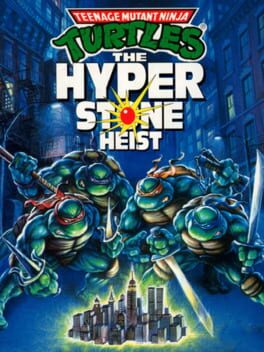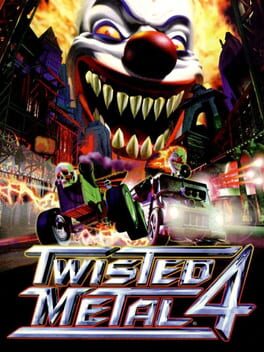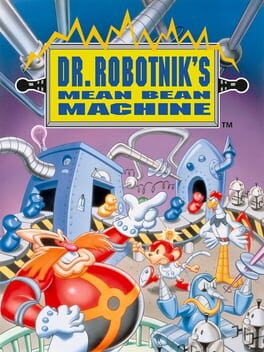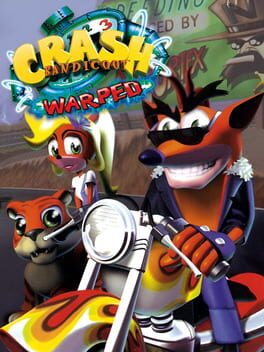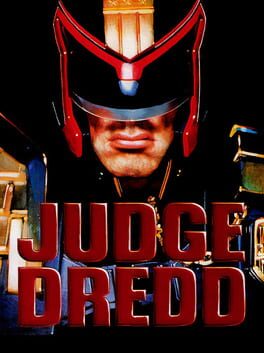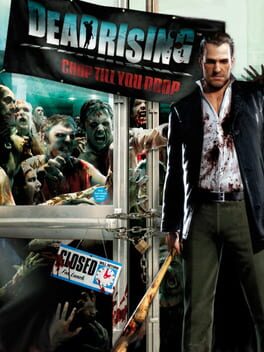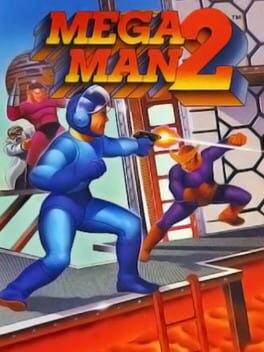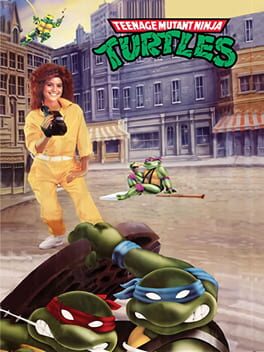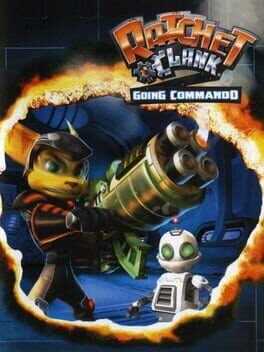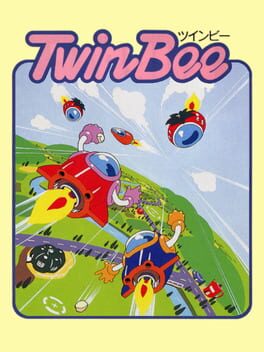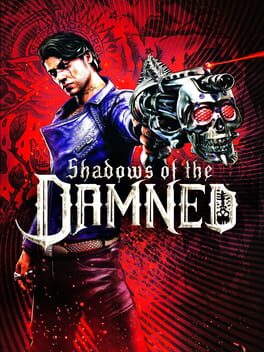If I played through this whole game blind and someone told me it's one of those bootleg games stuffed into cartridges that were sold across Spain or some shit, the only thing that'd stop me from believing them is the amount of polish this game has. What I mean by this, is Teenage Mutant Ninja Turtles: The HyperStone Heist is a watered down, poor substitute for Turtles In Time on SNES.
The core gameplay is fine, albeit feels a bit less precise than said SNES game. That alone is what separates this from that bizarre Mario bootleg derived from the "Super Mario 9" or the "Speedy Gonzalez: Los Gatos Bandidos" hack that replaced his character sprites with Sonic. Because the presentation of this game is awful. I'm willing to bet production for this was heavily rushed, as much of the environment was considerably drab, almost lifeless (when that wasn't the point).
There's so few bosses as well, the only one that wasn't a recycling of an older TMNT game being Tatsu. Yeah, remember Tatsu? The master of the foot clan in the first film, who was known for his expertise in hand-to-hand combat? Well, in this game, his only form of attacking is shooting arrows. He literally has no melee attacks. It's just really bizarre and kinda tells me the developers involved had no funds nor time to actually create anything new for this demake of Turtles In Time SNES.
I don't really understand why this game came out so ugly, when I know the Genesis was capable of great visuals that easily rivaled SNES classics most of the time. Again, might've just been a budget issue. I'm sure back in 1992, this game sufficed for people that only had a Sega Genesis. But in this modern age of being able to emulate SNES or Genesis with a paperclip's worth of technology, there's no real reason to play through this game.
The core gameplay is fine, albeit feels a bit less precise than said SNES game. That alone is what separates this from that bizarre Mario bootleg derived from the "Super Mario 9" or the "Speedy Gonzalez: Los Gatos Bandidos" hack that replaced his character sprites with Sonic. Because the presentation of this game is awful. I'm willing to bet production for this was heavily rushed, as much of the environment was considerably drab, almost lifeless (when that wasn't the point).
There's so few bosses as well, the only one that wasn't a recycling of an older TMNT game being Tatsu. Yeah, remember Tatsu? The master of the foot clan in the first film, who was known for his expertise in hand-to-hand combat? Well, in this game, his only form of attacking is shooting arrows. He literally has no melee attacks. It's just really bizarre and kinda tells me the developers involved had no funds nor time to actually create anything new for this demake of Turtles In Time SNES.
I don't really understand why this game came out so ugly, when I know the Genesis was capable of great visuals that easily rivaled SNES classics most of the time. Again, might've just been a budget issue. I'm sure back in 1992, this game sufficed for people that only had a Sega Genesis. But in this modern age of being able to emulate SNES or Genesis with a paperclip's worth of technology, there's no real reason to play through this game.
1993
It's almost indescribable what Doom did for the industry and future generations of video games. It may not have been the first FPS game, but it's undeniable as the most influential. So many aspects of this game would inspire countless creators, including artists and game developers.
It's also modded and morphed more than pretty much any other game out there, with people still lovingly designing stages and mechanics for Doom to this day! I think it helps that the game itself is STILL awesome. Paired with very simple gameplay, it's responsive and has great feedback with every action you perform (varies among versions, but I'm mainly talking PC and any modern official port). It's about getting lost in these hellish halls as it is blasting demons in the face, all wrapped in exquisite sound design and kickass music!
Yeah, not really saying anything new here. And I probably never will. I just love Doom.
It's also modded and morphed more than pretty much any other game out there, with people still lovingly designing stages and mechanics for Doom to this day! I think it helps that the game itself is STILL awesome. Paired with very simple gameplay, it's responsive and has great feedback with every action you perform (varies among versions, but I'm mainly talking PC and any modern official port). It's about getting lost in these hellish halls as it is blasting demons in the face, all wrapped in exquisite sound design and kickass music!
Yeah, not really saying anything new here. And I probably never will. I just love Doom.
1999
Twisted Metal 3 and 4 are two peas in a smelly pod. They are both equally shoddy games with equally hideous presentation. I'm convinced they were made around the same time, or with the exact same people. Granted, each game only had a number of months to be complete so for what it's worth, that in itself is impressive.
The only thing this has over the 3rd title is that the gameplay is slightly refined. Controlling cars feels a little less like shit, and flipping yourself over has no recovery frames. They likely listened to feedback regarding how people took the 3rd game back in the day and tried to improve it . . . nice job on that count.
Unfortunately, the gameplay feels just as monotonous and the stage design is still lacking, perhaps I just don't like these whimsical styles they went for. Things like the carnival, the kid's room, and even the Aztec arena feel more aligned with a Disney skateboarding game, not Twisted Metal.
The characters are also hideous with really underwhelming endings, the one thing that's revered more than anything else regarding this franchise. Frankly, I'm surprised Twisted Metal 3 and 4 are ranked as highly as they are on this website. I can't help but think narrow-minded nostalgia has a strong hand here. I was single digits when these games came out, guys. I was there too. It still sucked.
The only thing this has over the 3rd title is that the gameplay is slightly refined. Controlling cars feels a little less like shit, and flipping yourself over has no recovery frames. They likely listened to feedback regarding how people took the 3rd game back in the day and tried to improve it . . . nice job on that count.
Unfortunately, the gameplay feels just as monotonous and the stage design is still lacking, perhaps I just don't like these whimsical styles they went for. Things like the carnival, the kid's room, and even the Aztec arena feel more aligned with a Disney skateboarding game, not Twisted Metal.
The characters are also hideous with really underwhelming endings, the one thing that's revered more than anything else regarding this franchise. Frankly, I'm surprised Twisted Metal 3 and 4 are ranked as highly as they are on this website. I can't help but think narrow-minded nostalgia has a strong hand here. I was single digits when these games came out, guys. I was there too. It still sucked.
Something something Puyo Puyo. I remember being a kid and finding it weird that this played exactly like Kirby's Avalanche, not knowing better until excavating an early Wikipedia around the mid-00s.
Anyway, Dr. Robotnik's Mean Bean Pretty Hate Machine is a game I played every once in a while, because--like Sonic Spinball--SEGA is very insistent in porting it on everything possible. I'd play the "Scenario mode" and get a few stages in, until the bot decides to wipe the floor with their fast, calculated moves. I decide I'm not smart enough for what is Puyo Puyo's simplistic puzzle system, and move on.
UNTIL TODAY. I fucking beat it. I finally got to see all the ugly bot designs I never actually saw, and that disgustingly (awesome) Robotnik design taunt me to the end. I got rocked pretty often against these asshole bots, but eventually won! Only for the ending to say "Now do hard mode" to which I said "Fuck you, no" and shut the game off.
I'm still not very good at this game, but I do understand that an easy way to get chain combos is to stack colors near each-other (something a child could figure out) and try to get single colors lined up correctly so they pop and fall in the right order. But time is of the essence, because your opponent can chain combos and throw blank balls onto your lane to mess up your strategy. So the constant question is, do you have enough time to stack up a chain to hit them hard? Or should you go for a quick 2-hit chain in order to mess them up briefly to keep up?
I don't find Puyo Puyo as engaging as other puzzle games, but it's got its own rhythm and sense of satisfaction. I probably would like the game more if I played the original version, instead of this weird product designed "for Western audiences" by coating it in the paint of this Saturday morning cartoon.
Anyway, Dr. Robotnik's Mean Bean Pretty Hate Machine is a game I played every once in a while, because--like Sonic Spinball--SEGA is very insistent in porting it on everything possible. I'd play the "Scenario mode" and get a few stages in, until the bot decides to wipe the floor with their fast, calculated moves. I decide I'm not smart enough for what is Puyo Puyo's simplistic puzzle system, and move on.
UNTIL TODAY. I fucking beat it. I finally got to see all the ugly bot designs I never actually saw, and that disgustingly (awesome) Robotnik design taunt me to the end. I got rocked pretty often against these asshole bots, but eventually won! Only for the ending to say "Now do hard mode" to which I said "Fuck you, no" and shut the game off.
I'm still not very good at this game, but I do understand that an easy way to get chain combos is to stack colors near each-other (something a child could figure out) and try to get single colors lined up correctly so they pop and fall in the right order. But time is of the essence, because your opponent can chain combos and throw blank balls onto your lane to mess up your strategy. So the constant question is, do you have enough time to stack up a chain to hit them hard? Or should you go for a quick 2-hit chain in order to mess them up briefly to keep up?
I don't find Puyo Puyo as engaging as other puzzle games, but it's got its own rhythm and sense of satisfaction. I probably would like the game more if I played the original version, instead of this weird product designed "for Western audiences" by coating it in the paint of this Saturday morning cartoon.
1991
Battletoads couldn't JUST be a beat-em-up, no sir. It needed to also be a platformer, a racing game, a puzzle game, all kinds of things blended into this action title . . . and be terrible on all of these counts!
Battletoads is notorious for its difficulty curves that made it infamous in the gamingsphere. And it IS tough, but it also just isn't fun to clear due to how unfair it all feels. Granted, a lot of games around this time were full of obtuse design like Battletoads. It's probably a miracle that Nintendo gave Rare a shot at one of their most popular IPs after this.
Battletoads is notorious for its difficulty curves that made it infamous in the gamingsphere. And it IS tough, but it also just isn't fun to clear due to how unfair it all feels. Granted, a lot of games around this time were full of obtuse design like Battletoads. It's probably a miracle that Nintendo gave Rare a shot at one of their most popular IPs after this.
A sequel that goes in all sorts of directions, it begins to feel aimless. Crash Bandicoot: Warped takes you on a world tour where you not only run and jump, but also swim and drive different kinds of vehicles in linear platforming stages. The regular platforming stages are more than solid, providing high-quality design that we expect from Naughty Dog after they have proven their strength in that aspect through Crash Bandicoot 2. The boss fights, in my opinion, also saw improvement. While you still sometimes had to wait and dodge obstacles while the boss faffed about in the background before you can land a hit, others provided means for experienced players to make their own route and quickly dish out the pain through their spins!
It's pretty much the rest of the game's design that feels lackluster. I know I'm preaching to the choir when I say the vehicular stages are a really mixed bag. The tiger stages get irritating to complete, I think their hill-y designs compared to the polar bear stages in 2 are what make them less enjoyable. The jetski stages just feel slow and tedious, albeit showing impressive visuals and physics with the water back in 1998. Swimming stages unsurprisingly stink, and airplane stages are underwhelming. It was Crash in his motorcycle that I found the most enjoyment in clearing and getting fast times in. Which is funny, because I feel those stages get the most flack from fans.
Overall, it's still better than the first game, I think. Naughty Dog's last entry for the wily bandicoot shows that the team is willing to experiement and take risks after already proving their worth. Something that would become prevalent in their future titles.
It's pretty much the rest of the game's design that feels lackluster. I know I'm preaching to the choir when I say the vehicular stages are a really mixed bag. The tiger stages get irritating to complete, I think their hill-y designs compared to the polar bear stages in 2 are what make them less enjoyable. The jetski stages just feel slow and tedious, albeit showing impressive visuals and physics with the water back in 1998. Swimming stages unsurprisingly stink, and airplane stages are underwhelming. It was Crash in his motorcycle that I found the most enjoyment in clearing and getting fast times in. Which is funny, because I feel those stages get the most flack from fans.
Overall, it's still better than the first game, I think. Naughty Dog's last entry for the wily bandicoot shows that the team is willing to experiement and take risks after already proving their worth. Something that would become prevalent in their future titles.
1995
My own personal "Deathman"! The only reason I revisited this is because I recall liking it as a kid and playing it with my brother a good amount of times. I feel like it would've been very easy for Judge Dredd to be sort of like NARC, or even Contra. A game based on a sci-fi action movie about a big brutish cop delivering justice in the form of bullets, make it a run-n-gun! Instead, it's a methodical action platformer where you have to take your time to take enemies out efficiently, and sometimes even arrest them for proper detainment. And clearing stages isn't as easy as getting from point A to point B, as you usually have to explore the non-linear area in order to make progress.
In all honesty, though the ambition this game bears doesn't make for a very good game. Movement feels very stiff, it's a surprise they put any sort of premium in platforming. The gameplay never changes, so you're just rinse-and-repeating looking around stages and performing very monotonous platforming tasks. Perhaps I should've kept this as a faint memory.
In all honesty, though the ambition this game bears doesn't make for a very good game. Movement feels very stiff, it's a surprise they put any sort of premium in platforming. The gameplay never changes, so you're just rinse-and-repeating looking around stages and performing very monotonous platforming tasks. Perhaps I should've kept this as a faint memory.
The amount of intrigue behind this game and its overall design can only be truly captured if you know the original game from head-to-toe. However, I think Dead Rising: Chip Till You Drop is not a good substitute for the original experience, or even close. And it's not because the colors are washed-out, not because the textures are blotchy at best, not because the cutscenes are all pre-rendered thus nullifying the fun in customized outfits, not because there's barely any zombies on-screen or items to use as weapon. It's because this is an entirely different game.
While I'm sure there are people who grew up with the game and had a good time with it, due to only having a Wii back in the late 2000s. I was not one of these folks, and didn't look into it until I wanted to analyze the game for myself. The gameplay is much more streamlined, and utilized the bones of Resident Evil 4, which made sense since the developers already got that working perfectly fine on said console. Nearly all of the design that differs from the original experience screams 'limitation' as they were trying to stuff this Xbox 360 game to look presentable on Wii.
The missions are never too interesting, usually amounting to a weird watered-down version of tasks you could complete (most of them optional) from the original game. The same music keeps blaring through your speakers when performing said missions, dissimilar to the original where the only thing you hear is the atmosphere of a regular shopping mall infested with the undead.
Back in 2009, I wouldn't bat an eye to someone who played this game because they only had a Wii. But in this day and age, the only reason I can see anyone with a PC or PS4 or Xbox One play this game is because they're morbidly curious after experiencing the original game or its proper ports. In fact, I would argue that most screenshots of Dead Rising: Chop Till You Drop look like DALL-E results. Case and point;
https://i.imgur.com/QqPkB5L.png
While I'm sure there are people who grew up with the game and had a good time with it, due to only having a Wii back in the late 2000s. I was not one of these folks, and didn't look into it until I wanted to analyze the game for myself. The gameplay is much more streamlined, and utilized the bones of Resident Evil 4, which made sense since the developers already got that working perfectly fine on said console. Nearly all of the design that differs from the original experience screams 'limitation' as they were trying to stuff this Xbox 360 game to look presentable on Wii.
The missions are never too interesting, usually amounting to a weird watered-down version of tasks you could complete (most of them optional) from the original game. The same music keeps blaring through your speakers when performing said missions, dissimilar to the original where the only thing you hear is the atmosphere of a regular shopping mall infested with the undead.
Back in 2009, I wouldn't bat an eye to someone who played this game because they only had a Wii. But in this day and age, the only reason I can see anyone with a PC or PS4 or Xbox One play this game is because they're morbidly curious after experiencing the original game or its proper ports. In fact, I would argue that most screenshots of Dead Rising: Chop Till You Drop look like DALL-E results. Case and point;
https://i.imgur.com/QqPkB5L.png
1989
I was always confused why Mega Man 2 was regarded as one of the greatest games of all time. This is honestly so much like the original Mega Man, that it only gets the merit of a slightly higher score from me because the level design is noticeably less obtuse. They made this game in under a year, so I wouldn't give them much flack for not really attempting to evolve the design in any meaningful way. Perhaps a sign for how this franchise would be handled for decades to come.
Even so, Mega Man 2 is a satisfying little action platformer that I can enjoy from time-to-time. Something I have to force myself into doing is experiment with the different weapon types against things other than the bosses. I think that's where the real meat is, which I missed on back when I was a kid.
Even so, Mega Man 2 is a satisfying little action platformer that I can enjoy from time-to-time. Something I have to force myself into doing is experiment with the different weapon types against things other than the bosses. I think that's where the real meat is, which I missed on back when I was a kid.
As far as quarter-munching arcade beat-em-ups go, Teenage Mutant Ninja Turtles '89 is one of the better ones. I would argue that among the "Konami licensed beat-em-up triumvirate" (just made that up) it is overall much more fairly designed than the likes of X-Men and The Simpsons. What I mean by that is, beating this game by yourself or maybe even friends to further confuse boss AI is possible to achieve with only perhaps 2 or 3 dollars worth of continues. Of course, that's if everyone involved is trying their best to understand the mechanics, or at least the i-frames the enemies are granted almost constantly.
The graphics were also pretty impressive, and captured the essence of the cartoon it's based on very well. However, as I mentioned before, fighting enemies can be cumbersome and their i-frames to ensure you can't absolutely trounce them with your mashing is annoying to say the least. I understand the notion, I just think the designers could've provided challenging beat-em-up gameplay in a different way. Although I can't even make suggestions that would've worked in the late 80s, I'm sure they were pushing limits with how much this game provided. Perhaps the enemy count couldn't get too high before things go internally haywire. Boss fights also amounted to quick 'touch-and-go' strategy, lest you get pummeled by their devastating attacks.
Overall, it's a fun game to learn and tear apart if you're willing to do so, perhaps even a good place to start you're trying to figure out the beat-em-up subgenre, but I think most remember it for just mashing buttons with friends for a good 5-10 minutes. Like many did in their popular arcades, or even Xbox Live back in 2007. There were pretty much random games happening all the time you could hop into at an instant back then. It was magical.
The graphics were also pretty impressive, and captured the essence of the cartoon it's based on very well. However, as I mentioned before, fighting enemies can be cumbersome and their i-frames to ensure you can't absolutely trounce them with your mashing is annoying to say the least. I understand the notion, I just think the designers could've provided challenging beat-em-up gameplay in a different way. Although I can't even make suggestions that would've worked in the late 80s, I'm sure they were pushing limits with how much this game provided. Perhaps the enemy count couldn't get too high before things go internally haywire. Boss fights also amounted to quick 'touch-and-go' strategy, lest you get pummeled by their devastating attacks.
Overall, it's a fun game to learn and tear apart if you're willing to do so, perhaps even a good place to start you're trying to figure out the beat-em-up subgenre, but I think most remember it for just mashing buttons with friends for a good 5-10 minutes. Like many did in their popular arcades, or even Xbox Live back in 2007. There were pretty much random games happening all the time you could hop into at an instant back then. It was magical.
The perfect sequel? People seem to think so, but I think it's complicated. Ratchet & Clank 2 is a little strange, because it leaned heavily towards explosive combat, much more than the original game. There's still some good platforming stuff, but not nearly as much as the original game. Of course, when I was 13 and played this for the first time, I absolutely adored it over the original. These days, I guess my tastes have gotten more nuanced so there's something about this game in retrospect that doesn't seem right.
The weapon line-up is pretty good, albeit egregious in some of its pricing. I like the encouragement to use each weapon as much as you can in the form of "leveling" them up through kills you confirm with said weapons (although I think collecting exp through damage makes more sense) and some of the bosses are genuinely fun challenges. I like the variety shown throughout in the form of arena challenges, races, and exploration for secret items.
The story also serves as a good continuation between Ratchet and Clank, where it genuinely feels like the two are good friends that work together well. Ratchet now sets his eyes at anyone willing to threaten them, and opinions at the greedy assholes they come across ("Now even the COMPUTERS are charging us?! That's it, this galaxy blows.")
I feel it needs to be said the amount of details in the atmosphere and environment is also a bit lacking compared to the first game. Most of the worlds feel less lived-in, if that makes sense. They likely wanted the production of this to be more straight-forward now that they've established their ground with the first game. This is no longer a "We need to make a good impression for the new generation" project, but a sequel to something that already exists. While I would've loved something that feels like a proper continuation to the original title--gameplaywise--this was still a great sequel jam-packed with explosive fun.
On a bad day, I'd give this 0 stars because of how the lava gun upgrades. Y'all know what I'm talking about.
The weapon line-up is pretty good, albeit egregious in some of its pricing. I like the encouragement to use each weapon as much as you can in the form of "leveling" them up through kills you confirm with said weapons (although I think collecting exp through damage makes more sense) and some of the bosses are genuinely fun challenges. I like the variety shown throughout in the form of arena challenges, races, and exploration for secret items.
The story also serves as a good continuation between Ratchet and Clank, where it genuinely feels like the two are good friends that work together well. Ratchet now sets his eyes at anyone willing to threaten them, and opinions at the greedy assholes they come across ("Now even the COMPUTERS are charging us?! That's it, this galaxy blows.")
I feel it needs to be said the amount of details in the atmosphere and environment is also a bit lacking compared to the first game. Most of the worlds feel less lived-in, if that makes sense. They likely wanted the production of this to be more straight-forward now that they've established their ground with the first game. This is no longer a "We need to make a good impression for the new generation" project, but a sequel to something that already exists. While I would've loved something that feels like a proper continuation to the original title--gameplaywise--this was still a great sequel jam-packed with explosive fun.
On a bad day, I'd give this 0 stars because of how the lava gun upgrades. Y'all know what I'm talking about.
1985
One of the earliest shmups ever made, Twinbee on Famicom is short but sweet. A delightfully colored and vibrant game that's fairly challenging, but light enough on the enemy waves that it isn't daunting to people that would potentially want to start getting into this subgenre.
Like a lot of Konami classics, the music and sound effects are excellent, helping accentuate this epic space battle against enemies that look oddly close to houseware, as if the designers looked around their kitchen and decided this is the rogue gallery for their new arcade style space shooter. The early game development days were just magical.
Also, did anyone else first experience Twinbee in the form of a Newgrounds flash game where the titular ship just walked around normally and shot at bystanders with a real gun? No, just me? Cool.
Like a lot of Konami classics, the music and sound effects are excellent, helping accentuate this epic space battle against enemies that look oddly close to houseware, as if the designers looked around their kitchen and decided this is the rogue gallery for their new arcade style space shooter. The early game development days were just magical.
Also, did anyone else first experience Twinbee in the form of a Newgrounds flash game where the titular ship just walked around normally and shot at bystanders with a real gun? No, just me? Cool.
You ever go see a movie you're excited for because it's from 'LEGENDARY DIRECTOR [x] AND GODLIKE WRITER(S) [y and/or z], and then you go see it with a friend who is less savvy on the subject, but wouldn't mind checking it out too? When the movie is over, you're sitting in the theater as the credits roll. Sullen . . . resentful . . . disappointed. Your friend is like "What's wrong?" You say "This movie." And they're like "Really? I thought it was okay!" And all you can retort with is "Yeah, it was 'okay'! That's the problem!" Shadows Of the Damned is that feeling wrapped up into a video game. Also your friend is easily amused by basic milquetoast action and dick jokes. I feel like that detail is important.
The game is a decent third-person shooter with some really nice atmosphere and fantastic enemy designs, however its story is mostly uninteresting as it's carried heavily by the banter between Garcia and Johnson: The main character and his talking gun. The writing has some good nuggets within--the storybooks you can come across deserve to be specifically shouted out--but it's very run-of-the-mill and uninspired. As for the gameplay, it's a watered-down Resident Evil 4 with only 3 different weapons to use, a severe step down from a game released 6 years before this. Enemy confrontations aren't too challenging, even on highest difficulty, and the bosses amount little to just shooting a spot that's glowing red.
Of course, anyone that saw an ounce of marketing from this game (of the 3 ounces EA provided) can't miss the names plastered on. Shinji Mikami, Suda51, and Akira Yamaoka. 3 very talented developers that provided excellence in their respective fields. How can a pot stewed between the creator of Resident Evil and the creator of killer7 come out so bland? Probably because EA didn't show you the rest of the chefs shoving their pounds of spam, powdered vanilla, or even their own body hairs into said pot. It shouldn't be a surprise to anyone that EA severely meddled with the project for the near-5 years it took making this game, going as far as kicking Suda off director's chair and appointing someone themselves.
I could go into severe detail, but I already have in an analysis video. The skinny of it is that EA didn't trust Suda at all to sell the game through his own vision, and saw Mikami as this excuse to just try and hock their own Resident Evil 4. Suda nor Mikami wanted a third-person shooter. Hell, the original concept was a survival horror in a world of darkness where your torch is your only weapon! Suda has very complicated feelings regarding this game. Its production forever changed how he looked at the industry. And that's all extremely interesting . . . much more than the game itself. Shadows of the Damned will forever be this testament to how a multi-billion dollar company can easily kill creativity.
The game is a decent third-person shooter with some really nice atmosphere and fantastic enemy designs, however its story is mostly uninteresting as it's carried heavily by the banter between Garcia and Johnson: The main character and his talking gun. The writing has some good nuggets within--the storybooks you can come across deserve to be specifically shouted out--but it's very run-of-the-mill and uninspired. As for the gameplay, it's a watered-down Resident Evil 4 with only 3 different weapons to use, a severe step down from a game released 6 years before this. Enemy confrontations aren't too challenging, even on highest difficulty, and the bosses amount little to just shooting a spot that's glowing red.
Of course, anyone that saw an ounce of marketing from this game (of the 3 ounces EA provided) can't miss the names plastered on. Shinji Mikami, Suda51, and Akira Yamaoka. 3 very talented developers that provided excellence in their respective fields. How can a pot stewed between the creator of Resident Evil and the creator of killer7 come out so bland? Probably because EA didn't show you the rest of the chefs shoving their pounds of spam, powdered vanilla, or even their own body hairs into said pot. It shouldn't be a surprise to anyone that EA severely meddled with the project for the near-5 years it took making this game, going as far as kicking Suda off director's chair and appointing someone themselves.
I could go into severe detail, but I already have in an analysis video. The skinny of it is that EA didn't trust Suda at all to sell the game through his own vision, and saw Mikami as this excuse to just try and hock their own Resident Evil 4. Suda nor Mikami wanted a third-person shooter. Hell, the original concept was a survival horror in a world of darkness where your torch is your only weapon! Suda has very complicated feelings regarding this game. Its production forever changed how he looked at the industry. And that's all extremely interesting . . . much more than the game itself. Shadows of the Damned will forever be this testament to how a multi-billion dollar company can easily kill creativity.
1992
A good first start in the subgenre of light-hearted racers, Super Mario Kart makes some design choices that were completely baffling to me as a kid, but make a lot more sense now.
The most apparent being the screen itself. Games were presented in 4:3 at the time to accommodate the common tube TV's aspect ratio. Dissimilar to F-Zero, Super Mario Kart wasn't just about going fast and seeing the road ahead, the numerous competing racers and hazardous item use make it so you need to be more aware of your surroundings. Thus, the front camera only takes up the upper half of the screen, making this "widescreen" look so you can better see everything in front of you, while having the bottom half of the screen represent either the live map of the race, or your review mirror. I appreciated these creative means of changing the way people would've likely seen racers at the time. Just as well, considering they changed a part of the genre forever.
The gameplay itself is serviceable, but isn't very gripping. At least not these days, or even the first time I went through the game myself as a teenager. I'm probably too influence by the countless hours I've sunk into its sequels. Regardless, it's still a charming little game that was certainly impressive at the time.
The most apparent being the screen itself. Games were presented in 4:3 at the time to accommodate the common tube TV's aspect ratio. Dissimilar to F-Zero, Super Mario Kart wasn't just about going fast and seeing the road ahead, the numerous competing racers and hazardous item use make it so you need to be more aware of your surroundings. Thus, the front camera only takes up the upper half of the screen, making this "widescreen" look so you can better see everything in front of you, while having the bottom half of the screen represent either the live map of the race, or your review mirror. I appreciated these creative means of changing the way people would've likely seen racers at the time. Just as well, considering they changed a part of the genre forever.
The gameplay itself is serviceable, but isn't very gripping. At least not these days, or even the first time I went through the game myself as a teenager. I'm probably too influence by the countless hours I've sunk into its sequels. Regardless, it's still a charming little game that was certainly impressive at the time.
1994
A platformer that was so puritanical on the sense of adventure and visual flair that it didn't even include a score counter! The first example of such I ever experienced, and I played a shitton of platformers back in the day. There is a completion rate, though, which marks all the secrets and collectables throughout each stage.
The developers behind the game designed all of its visuals in a 3D program, then rendered all of the animation into 2D sprites, and it works very well for the art style. They really depicted this world--or should I say, 'country'--with a sense of perspective. It was a very ambitious way to provide a sense of depth and distance in a 2D video game never seen before. So, visually speaking, it was awesome! Gameplay-wise, it was a bit of a bother because it numbed the sense of knowing where you can land on trees, cliffs, etc.
I wouldn't call that detriment to the game, though. It never blended background artifacts with actual platforms, so it's not like the game ever played any nasty tricks on you by accident. One thing I do find a bit detrimental--especially for completionists--is the method of "100%"ing the game. Like I said, that completion rate is added by finding all the collectables and secrets, but the game does not indicate in any sort of way what exactly you're missing. No way to tell what stages you haven't plundered of their secrets or collectables.
Not only that, but some of these secrets are kind of bullshit and even require a complete leap of faith! Some have posited that this was done in order to encourage sales of strategy guides that told all, or even the latest Nintendo Power magazine that featured Donkey Kong Country. I don't know how true that is, but I'm pretty sure Nintendo has pulled stuff like that before.
Anyway, one last nitpick is the difference in playing between Donkey Kong, or his species neighbor and best friend, Diddy Kong. Donkey Kong was able to easily defeat certain enemies that Diddy would have more trouble. Diddy Kong, however, was faster and slightly more agile. As someone that favored speed over strength in this kind of game, Diddy Kong was a no-brainer choice that I stuck with, as I always felt there wasn't enough leaning towards Donkey Kong to make him worthy of playing. Maybe if he at least was able to take down the bosses more quickly by requiring less hits to defeat them?
Either way, I loved this game as a kid, and it's still fun to go back to now. The music is especially a gem, really making that sound chip sing. Donkey Kong Country was one of the first (if not THE first) gambles Nintendo took on a Western company handling an original IP by them, and I think it paid off extremely well.
The developers behind the game designed all of its visuals in a 3D program, then rendered all of the animation into 2D sprites, and it works very well for the art style. They really depicted this world--or should I say, 'country'--with a sense of perspective. It was a very ambitious way to provide a sense of depth and distance in a 2D video game never seen before. So, visually speaking, it was awesome! Gameplay-wise, it was a bit of a bother because it numbed the sense of knowing where you can land on trees, cliffs, etc.
I wouldn't call that detriment to the game, though. It never blended background artifacts with actual platforms, so it's not like the game ever played any nasty tricks on you by accident. One thing I do find a bit detrimental--especially for completionists--is the method of "100%"ing the game. Like I said, that completion rate is added by finding all the collectables and secrets, but the game does not indicate in any sort of way what exactly you're missing. No way to tell what stages you haven't plundered of their secrets or collectables.
Not only that, but some of these secrets are kind of bullshit and even require a complete leap of faith! Some have posited that this was done in order to encourage sales of strategy guides that told all, or even the latest Nintendo Power magazine that featured Donkey Kong Country. I don't know how true that is, but I'm pretty sure Nintendo has pulled stuff like that before.
Anyway, one last nitpick is the difference in playing between Donkey Kong, or his species neighbor and best friend, Diddy Kong. Donkey Kong was able to easily defeat certain enemies that Diddy would have more trouble. Diddy Kong, however, was faster and slightly more agile. As someone that favored speed over strength in this kind of game, Diddy Kong was a no-brainer choice that I stuck with, as I always felt there wasn't enough leaning towards Donkey Kong to make him worthy of playing. Maybe if he at least was able to take down the bosses more quickly by requiring less hits to defeat them?
Either way, I loved this game as a kid, and it's still fun to go back to now. The music is especially a gem, really making that sound chip sing. Donkey Kong Country was one of the first (if not THE first) gambles Nintendo took on a Western company handling an original IP by them, and I think it paid off extremely well.
